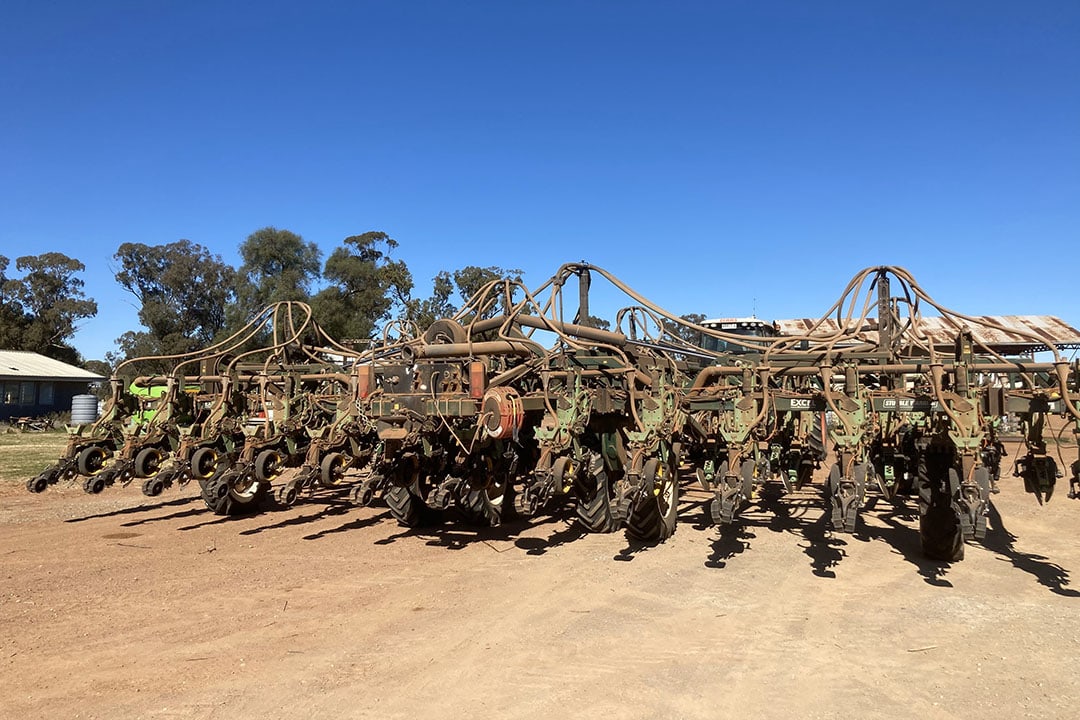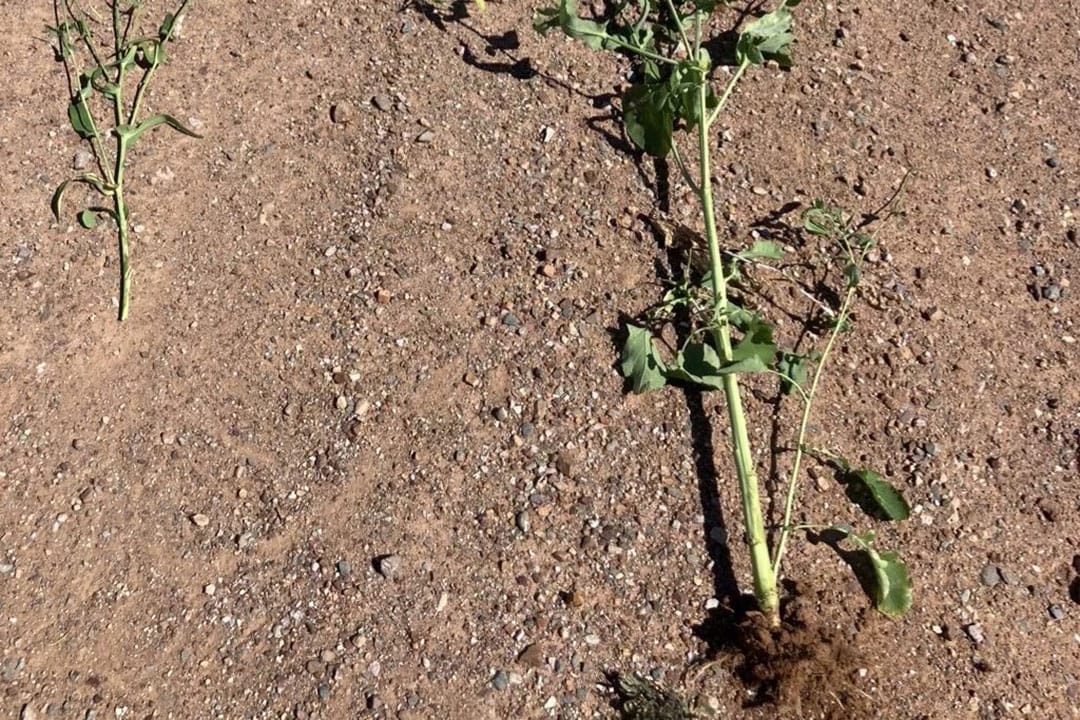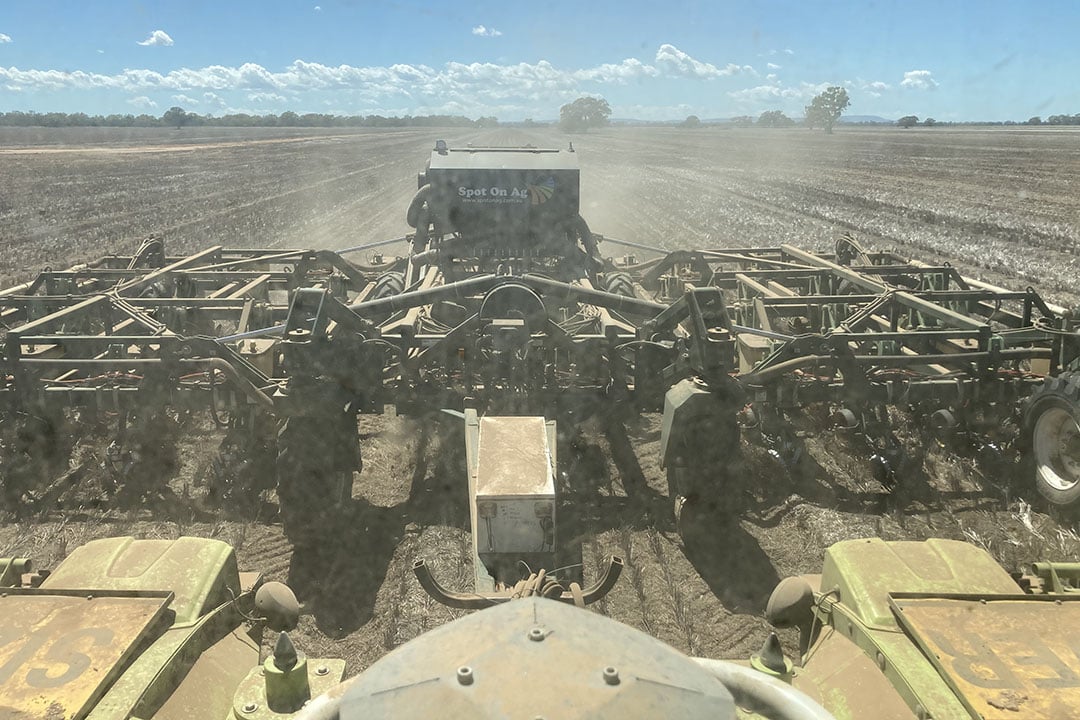Farmer Mark Swift: ‘Precision planting is not a panacea’

Precision planting is not a panacea, Australian farmer Mark Swift says. “I won’t say the results are there only because of precision planting.”
Cropping in the volatile rainfall area of Parkes, New South Wales, has required the Watson and Swift families in Tichborne to adopt a suite of management tools to optimise their crop production.
The business originally was a mixed farm, and went out of livestock nearly 20 years ago. “When we started solely cropping, we started making some mistakes. We didn’t appreciate what the livestock component was doing for our business, in terms of break crops and nitrogen for example”, Mark explains.
Rotation of barley, wheat and canola
The farm initially started with a rotation of barley, wheat and canola. “But our system just wasn’t working. We had to rebuild from that. At some point we decided that summer cropping was going to be part of our business. But we needed to get our establishment better.”
“Summer cropping is riskier than winter cropping and timing of management decisions can be critical, but incorporating them into our cropping sequence gives us greater flexibility and improved operational timeliness.”
Precision planting
The Watsons and Swifts started precision planting most of their crops in 2016. Mark’s interest in precision planting resulted in his own design for an Excel ‘Stubble Warrior’ or SP200. “We knew we would get an improvement”, Mark says. “We expected a kick in yield. We wanted to go with half metre spacings, with canola. We needed to get it to work for canola, because that’s where the seed savings would be.”
The farm is currently using an Excel Agriculture double-disc planter matched with a Bourgault air cart to establish crops. “We designed a bar with the ability to take precision planting metering systems on the front and back ranks”, Mark points out.
Text continues below image

Cleaning problematic
“That gave us half a metre of spacing. We took the precision units of the middle two ranks out, and placed an air seeder on it. That has worked pretty well, although cleaning has been problematic. Basically, every 100 hectares, you have to get out, pull your metre apart and unblock your seed holes.”
By firing seeds at 110 kms per hour through your air system, you might affect their germination
“We also played around with pulses in the air seeder, especially mung beans. But mung beans are pretty fragile and by the time they were in the precision air cart boxes, they were split. It also gave us some insight about similar issues with canola and other crops. Maybe they weren’t split, but by firing seeds at 110 kms per hour through your air system, you might affect their germination.“
“We stopped putting the seed for pulses through the air cart at that time. We bought an aftermarket Central Commodity System (CCS) for handling our pulses. That immediately improved the efficacy of our planting. But it made planting slower. Logistics became a real issue, and it now still takes longer.”
“But the results are there too. We have grown our best pulse-crops out of precision planters. I won’t say the results are there only because of precision planting. I see it as a magnifier of our management. If you’ve got ordinary management, and a crappy rotation, precision planting is not really going to do a lot. But if you’ve got the rest of your system dialled in, precision planting will work very well for you.”
Text continues below image

Saving 50% on seeds with precision planting
Mark establishes the canola crops on 50-centimetre rows. Before precision planting, the farm was planting 2 kgs of seed per hectare for canola, its main crop. “We went from 40 to 50 seeds to 25 seeds to the metre. At best, we are saving 50% on seeds through the air seeder. And there are varying reasons for that. I suspect there is damage to seed, issues with variable depth and fertiliser toxicity. Canola is a really tricky plant to get out of the ground. We do it with sheer weight of numbers.”
“So, we saved a bit with precision planting. Probably not as much as we thought we were going to save. If we had a lot with a really high seed count per kilo, I would be saving 900 grams per hectare. But canola seed has increased in size, so my saving are now probably around 400 to 700 grams per hectare.”
Averages well north of 3 ton canola per hectare
“We have treated our pulses pretty much the same. We took out a row, but didn’t put back more seeds in. That seems to have worked. Our fava bean yields this year averaged 4.5 ton per hectare. But we probably lost 1.5 ton because of flooding. We had one year of 5.5 ton with fava beans. And we had chickpeas in that range. And this is of 25 plants per metre. With canola, we had averages well north of 3 ton.”
“But I won’t lay the improvements of yields all on precision planting”, Mark emphasises. ”The improvements also come out of sticking to a rotation. We don’t have a single break in our rotation. We’ll have wheat, pulses, canola, and then go to a summer crop. In my opinion, you get crucified if you do a two-tier rotation.”
Also read: Precision planting leads to better results in winter crops
But it is not just rotation that adds to the results, Mark says. “Nitrogen is coming along for the ride too. And precision planting is also changing things. You no longer have the inter-plant variability. You can average the same number of seeds per linear metre with an air seeder, as with a planter. But with an air seeder they are more evenly spaced. They’ve got more access to moisture, nutrition and sunlight. If you’ve got a canola plant that has 10 by 50 centimetres by itself on the surface and one metre depth in the ground, it has a huge number of resources.”
“And you don’t get the crowding. You don’t get three, seven or eight plants right beside each other. You might get a double plant, with two seeds dropped at the same time. One will be good and one will be crap. But they always come to the surface.”
Text continues below image

50-centimetre row-spacings
Sorghum is conventionally sown on metre-rows, Mark says. “And then on marginal areas, farmers are usually looking at skip-rows or wide rows, for example of 1.5 metre or 2 metres. We also have tried all those options, and I now sow on 50-centimetre row-spacings. The difference is quite spectacular. We had a dry season with a ton per hectare yield. I learned about this stuff in my Nuffield study. The perfect placement for pants is a hexagon. The next best is a square. You want the distance to be basically equal in all directions.”
Rainfall is our limitation. I can’t control it
Cropping in a crop in the volatile rainfall region has presented some challenges for the families. “Rainfall is our limitation. I can’t control it. One of the challenges we have with our soil type, is that it’s basically structureless. With any sort of cultivation, including a minimal tillage planting operation, I have beautiful tilt above the soil. But when it rains before I get the crop up, the soil will be hard, and the crop will have to figure its way out. With fava beans that’s not a problem, but something small like canola it’s a big issue.”
“We now have rules for planting canola. We don’t plant too close to the rain, but two days prior to the rain. So that the seeds get well enough advanced to deal with issues like that. The soil temperature will be also lower, leaning into a rain event.”
Indian Ocean Dipole
The weather in the region is also influenced by the Indian Ocean Dipole, a type of year-to-year climate variability. “If there is a forecast of a negative Indian Ocean Dipole, I know it is likely to be wetter than average. And if I start with a full profile, I will already have all the water I need. Our soils store a fair bit of water. But on the other hand, if they are talking about a positive Indian Ocean Dipole and I have no profile, my top end will be about 200 millimetre of water at best.”
“My focus is: how much water are we going to pump out of this plant. There is a lot of loss in evaporation. If we are in a crappy season, I will just start pulling plants out, to increase the space of the plants that are left. This will meter your water out.”
“We benefit from that fact that we are in a biologically active area”, Mark explains. “We are close to our prime in nutrition, and invariably there is more moisture now, so that makes it easier to establish crop. And, I expect this decade we will see a lot of progress in seed quality.”
Text continues below image

Healthier plants with precision planting
Precision planting has presented the farm with healthier plants. “We have reduced disease pressure as there is more airflow through the plants. The leaves can dry out more, because you’ve got a bit of extra space. And you don’t have problems with shading.”
Our question is now: where can I take this?
Mark says he so far had near perfect establishment with precision planting. “Our question is now: where can I take this? Because the costs per row unit are a worry. Ideally, I just want planters and not an air seeder. But I will have to be able to absorb the cost and amortise these expenses over more acres. Air carts are very expensive, but they have a logistic advantage. You can go over a lot of country and don’t have to come in a lot.”
“I’m currently tightening my row spacing and I have just bought a new planter, a copy of the John Deere MaxEmerge, on a locally build bar from the Rasmussen Brothers in Dalby. It has precision planting, meters, closing wheels and trash whippers. And it’s still on 50 centimetres row spacing. I can still use the old planter, but this one can go over a lot of country quicker.”
“I won’t have the downtime with the new planter. It takes at least a full day to strip down the planter from its precision gear and then put the air seeder components back on. In the middle of sowing, you don’t want to be held up, pulling your planter apart.”
Logistics the biggest challenge
“Precision planting, however, is not a panacea”, Mark says. “It helps, but it is hard work. Logistics are the biggest challenge. You have to use all the tools at your disposal. Crop genetics, machinery, soil moisture, forecasts – for what they are worth – and management.”
“An eye for detail is important. If you drop that, it makes the business case for precision planting very challenging. But it’s very hard to tell what exactly the effect is of precision planting on our yields. Because it’s very hard to isolate. That’s the problem with what I’m doing. I wish there was more research done…”



